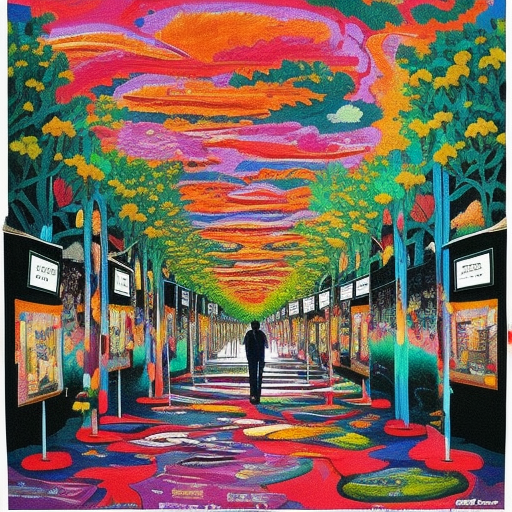Summary:
Art fairs are events that bring together galleries, artists, collectors, and art enthusiasts in a single location to showcase and sell artworks. These fairs provide a platform for artists to gain exposure, galleries to promote their artists, and collectors to discover new artworks. Art fairs have become increasingly popular in recent years, with major cities hosting annual events that attract thousands of visitors. However, they also face criticism for their commercial focus and the pressure they place on artists to produce marketable works.
Overview:
Art fairs are large-scale events that bring together galleries, artists, collectors, and art enthusiasts in a single location. They provide a platform for artists to showcase their work, galleries to promote their artists, and collectors to discover new artworks. Art fairs have gained significant popularity in recent years, with major cities around the world hosting annual events that attract thousands of visitors.
Benefits for Artists:
Art fairs offer numerous benefits for artists. They provide a unique opportunity to gain exposure and reach a wider audience. Artists can showcase their work alongside established galleries and renowned artists, which can enhance their reputation and increase their chances of attracting collectors and buyers. Art fairs also allow artists to network with industry professionals, potentially leading to future collaborations or representation by galleries.
Benefits for Galleries:
For galleries, art fairs serve as a platform to promote their artists and expand their client base. Participating in art fairs allows galleries to reach a larger audience than they would in their physical location. It also provides an opportunity to connect with collectors, curators, and other galleries, fostering collaborations and partnerships. Art fairs can significantly boost the visibility and sales of galleries, leading to increased recognition and success.
Benefits for Collectors:
Art fairs offer collectors a chance to discover new artists and artworks. They provide a concentrated selection of artworks from various galleries and artists, making it easier for collectors to explore different styles, mediums, and genres. Collectors can interact directly with artists and gallery representatives, gaining insights into the creative process and the stories behind the artworks. Art fairs also create a sense of excitement and exclusivity, as collectors have the opportunity to acquire artworks before they are widely available.
Criticism and Challenges:
Despite their popularity, art fairs face criticism for their commercial focus and the pressure they place on artists to produce marketable works. Some argue that the commercial nature of art fairs can overshadow the artistic value of the artworks on display. The pressure to create works that will sell at art fairs can lead to artists compromising their artistic vision and producing art solely for commercial purposes. Additionally, the high costs associated with participating in art fairs can be prohibitive for emerging artists and smaller galleries, limiting their access to these platforms.
Conclusion:
Art fairs have become integral to the art world, providing a platform for artists, galleries, and collectors to connect and engage with art. While they offer numerous benefits, such as exposure, networking opportunities, and increased sales, they also face criticism for their commercial focus and the challenges they pose to artists. As the art market continues to evolve, art fairs will likely remain a significant part of the art world, adapting to the changing needs and expectations of artists, galleries, and collectors.












